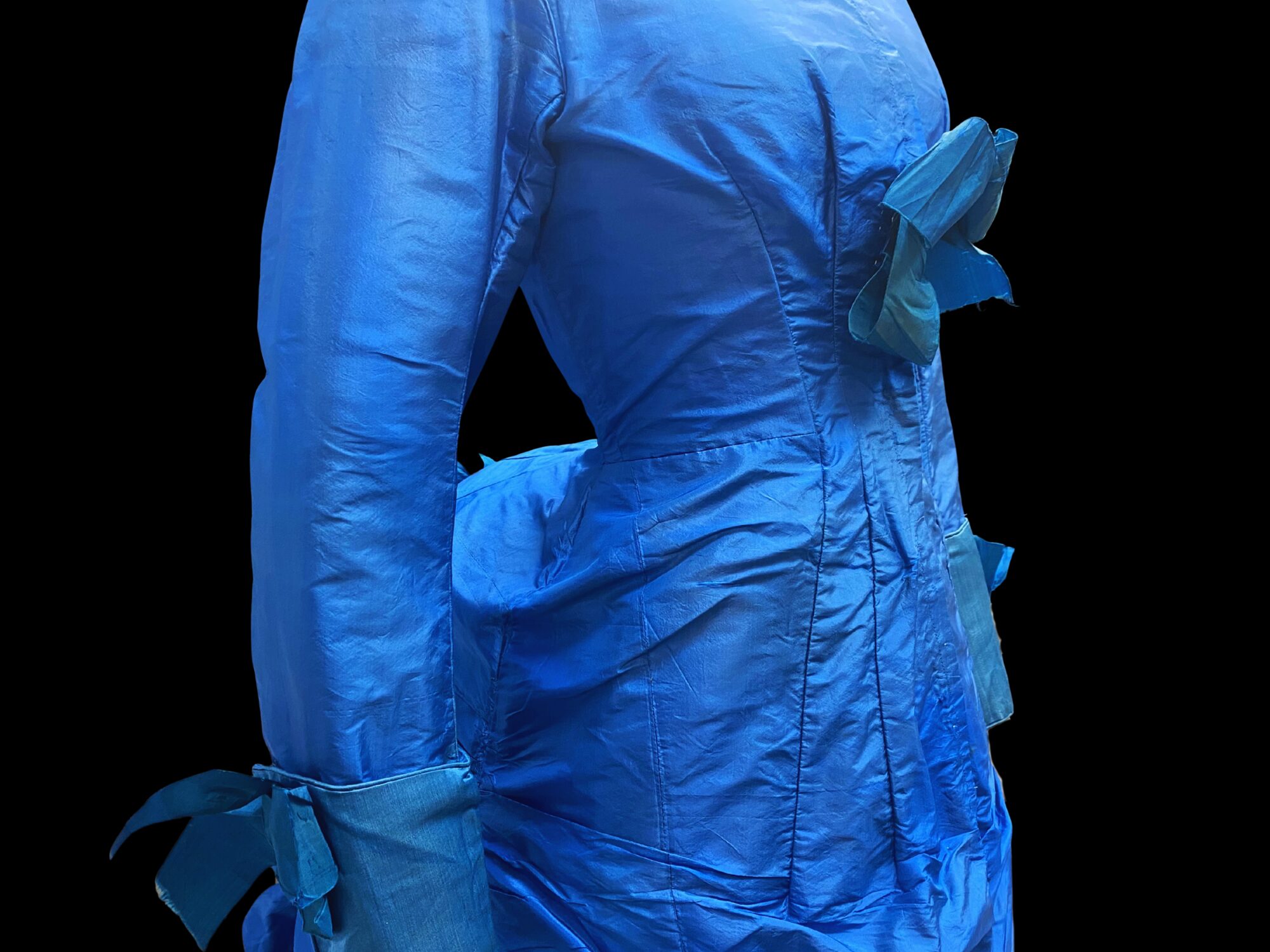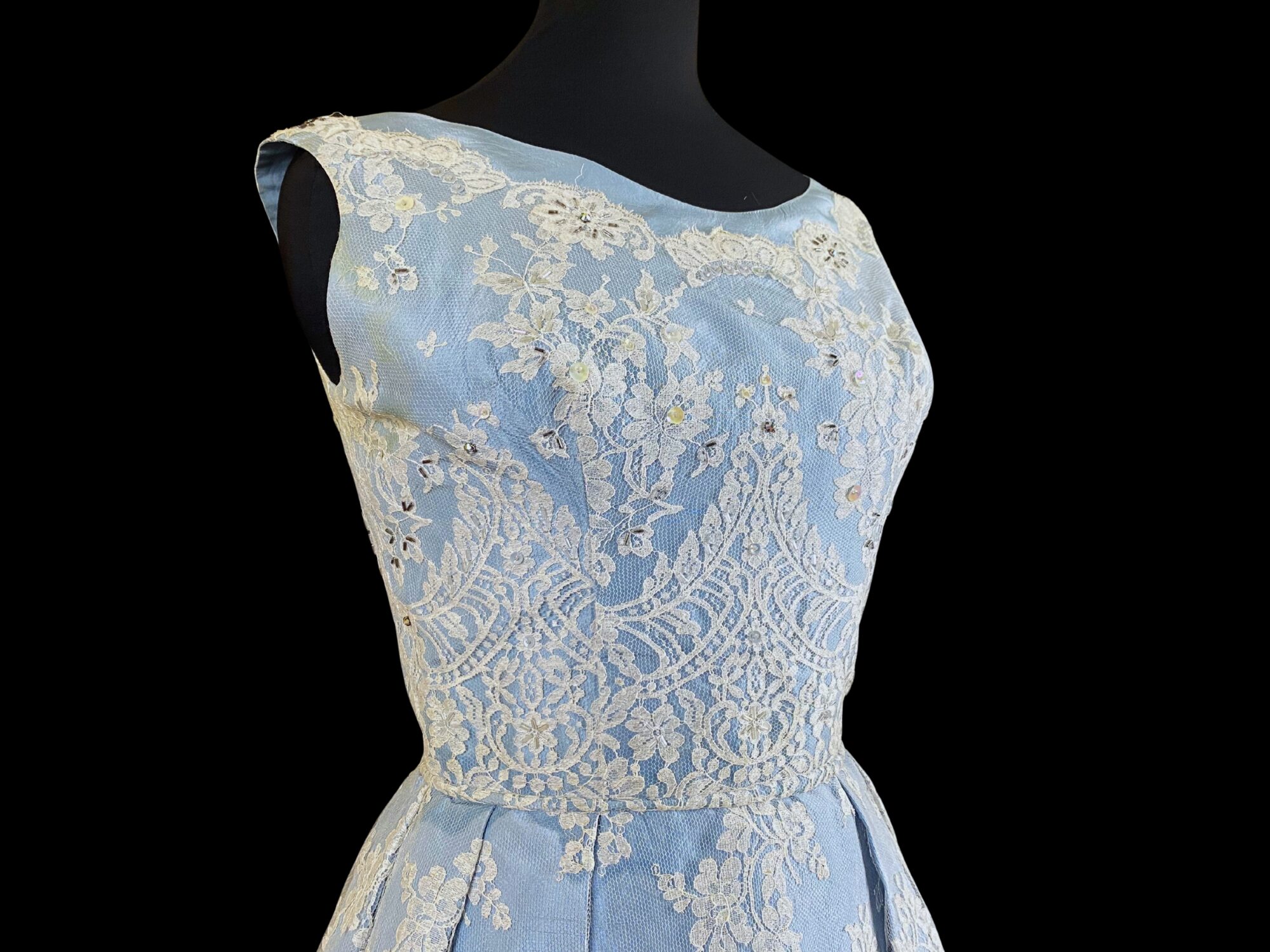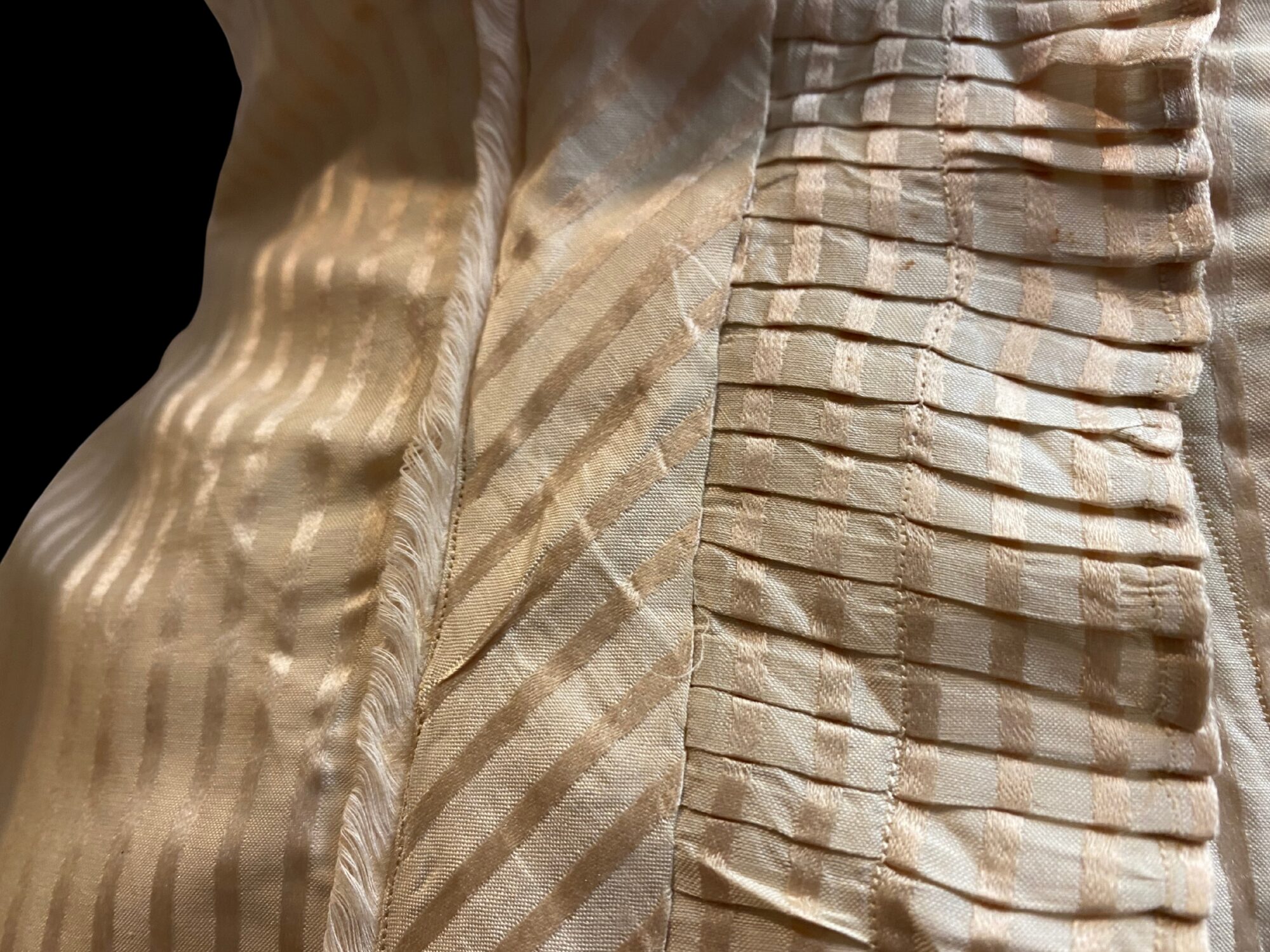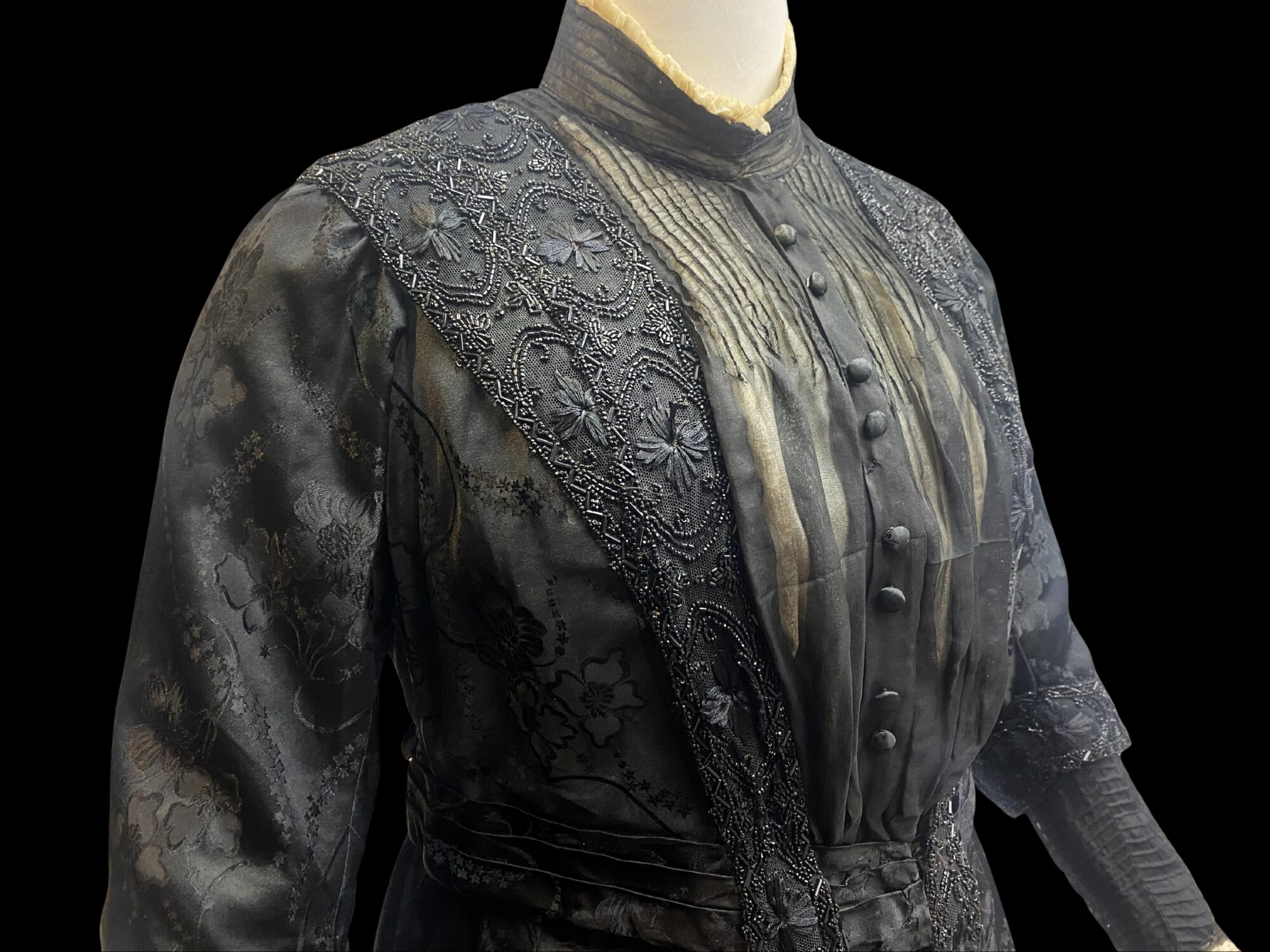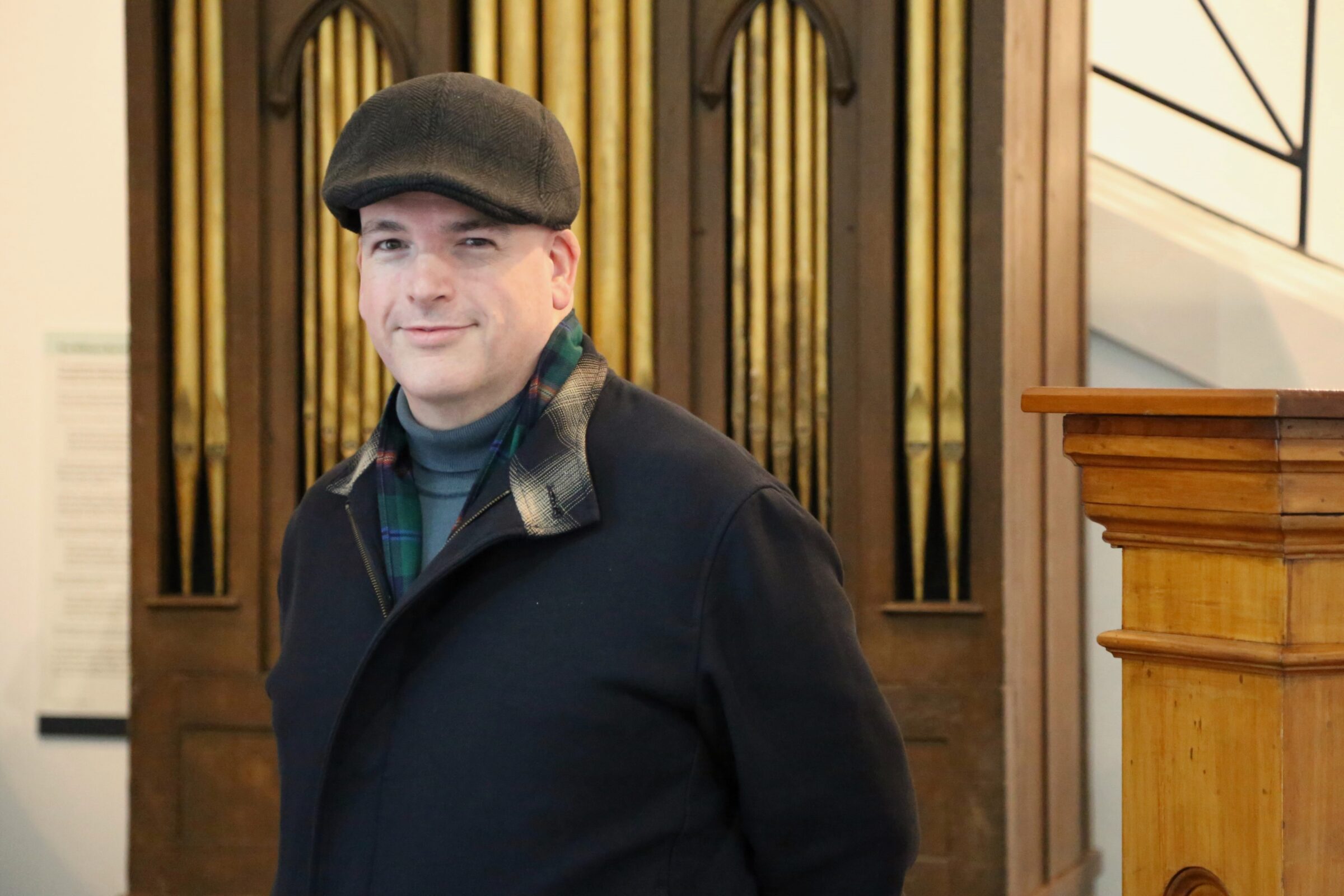Collection Stories
Here is a stunning, two-piece evening ensemble dating from the 1970s. Featuring both a sleeveless, floor-length gown and a matching, fur-trimmed coat, the ensemble was handmade and is truly one of a kind. This outfit was owned (and very possibly sewn) by Mrs Huia Gibbs of Whanganui. It was donated by her daughter-in-law Beverley Gibbs in 1998.
The ensemble is a standout in the museum’s collection, serving as a testament to the glamour and eclecticism of eveningwear of the 1970s. The outfit draws from a diverse range of inspirations, as evidenced by its many distinctive features. The 1970s were a period of bright colours and bold fabrics, building on trends from the Swinging Sixties and influenced by the rise of disco culture. While this outfit was unlikely to have been created for the dance floor, perhaps being better suited to an elegant dinner party, its use of metallic, bright red fabric and contrasting ornamentation certainly acknowledge these fashion trends.
The 1970s also saw the rise of the wrap-dress, popularised by Diane Von Furstenberg, which aligned with a growing push for comfort and functionality of women’s clothing styles as they were moving into the workforce en masse. Mrs Gibbs’ dress features a mock-wrap, which nods to a trend that has since become ubiquitous in women’s fashion. Further standout features of the dress are its black, lace-trimmed neckline and bodice and its asymmetrical button and bow detailing.
Mrs Gibbs’ splendid, full-length coat steals the show in this ensemble. The high collar and hook and eye ‘frog-closures’ take inspiration from traditional Chinese attire; however, its black rabbit fur accents are purely 1970s. Fur was all the rage, and the recent revival of faux fur or fleece-trimmed ‘Penny Lane’ coats (named after Kate Hudson’s character in the 2000 film Almost Famous) signal the return of these trends into the contemporary fashion market.
Both pieces are made from brocade, a rich fabric often featuring floral designs, which has an historic association with opulence and wealth. Brocade was wildly popular in the 1970s, ‘the age of synthetic fabrics’, during which such ornate patterns and styles were reproduced and made accessible on a mass scale. Mrs Gibbs chose a bright red, metallic brocade for this ensemble, which has an incredibly lustrous quality as the dress moves under the light. In particular, the contrast of the red fabric against the black fur and lace accents allows it to really stand out!
We may not know very much about Mrs Huia Gibbs, but we can imagine (based on the unique and bold nature of this evening ensemble) that she was certainly a confident woman with exquisite taste. Other items donated from her personal collection, including a pearlescent sequined blouse and a beaded black shift dress, indicate that she had a taste for opulent fabrics and glamorous designs. It is evident that Mrs Gibbs was a lady of luxury, perhaps even more so by today’s minimalist and loungewear-dominated standards.
By Lily Polaczuk. At the time of writing, Lily was completing a Master of Museum and Heritage Practice at Victoria University of Wellington and an internship at Whanganui Regional Museum.
Image: Red brocade evening dress and coat, 1970s
Photographed by Kathy Greensides
WRM 1998.60.2
View the full-length image.
Visit the museum to see Huia Gibbs’ ensemble up close in the exhibition Pūeru Ora – Past, Present, Pose.


